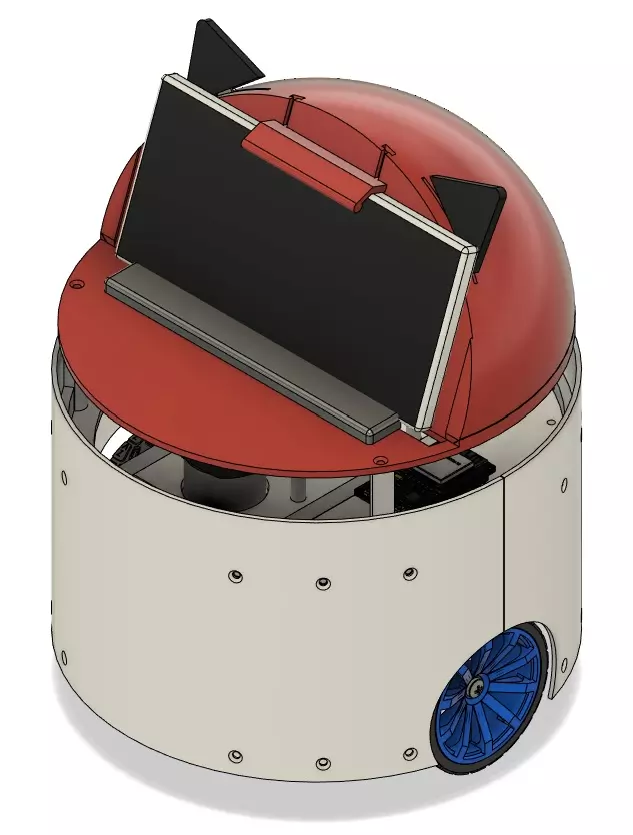Loki 200mm, Fido pet robot build, bring-up instructions

Here is Loki, a 200mm pet robot. Loki’s dimensions is small enough to fit the widely used 210x250mm and 220x220mm 3D print volumes, so you don’t have to invest in a bigger 3D printer.
Loki comes with his bigger brother Fido, 250mm. Both robots are basically identical, except for the size.
Snoopy, a 300mm robot, is the oldest and the biggest brother in the family.
Once the software is finished, Loki will act as a pet - look cute, play ball, hide-and-seek and chase, demand its owners’ attention and greet its owners happily at the door. To get a feel of what Maker’s Pet robots will do, watch Loki’s big (300mm) brother Snoopy (in a simulation)
- play ball and hide under a table
- self-drive, map and navigate a living room, all automatically.
Utility functions will include patrolling the house.
You can download design files here:
Each design repository includes:
- Fusion 360 3D CAD design files
- 3MF, STL files for 3D printing
- Arduino firmware source code
- ROS2 robot description package, configuraiton files and a Gazebo simulation model
- KiCad electronics schematics, BoM; PCB layout is in the works
- Assembly documentation is in the works, including assembly and bringup videos
Step-by-step assembly instructions.
One-time robot and PC setup instructions.
Robot bring-up instructions video
Robot 3D printing instructions
Robot’s Arduino ESP32 breakout board setup instructions
CAD design animation (Fusion 360).
Loki’s head 3D printed
Loki’s head gets 3D printed using a silk red PLA on a Prusa MK3.5S.
Loki design notes
Loki is designed
- to be easily scalable to different sizes, including 250mm.
- to be modular - similar to Snoopy, but simplified
- the side body will be segmented and modular, unlike Snoopy’s, so you can add body sensors - including ultrasonic, optical proximity, collision, touch, laser pointer, optical distance - without reprinting the entire Loki’s body. I would also venture a guess that - for now - Roomba-like bumper collision sensors may not be necessary for a pet robot.
- the assembly becomes simplified because, unlike Snoopy, by default, Loki doesn’t have a bumper (to sense collisions), yet you can add a bumper and collision sensors later if you wish so.
- the CAD design becomes simpler (including for myself)
- to be sturdier than Snoopy. The side walls now support upper plates.
 Get an early launch invite from us, subscribe to our newsletter
Get an early launch invite from us, subscribe to our newsletter